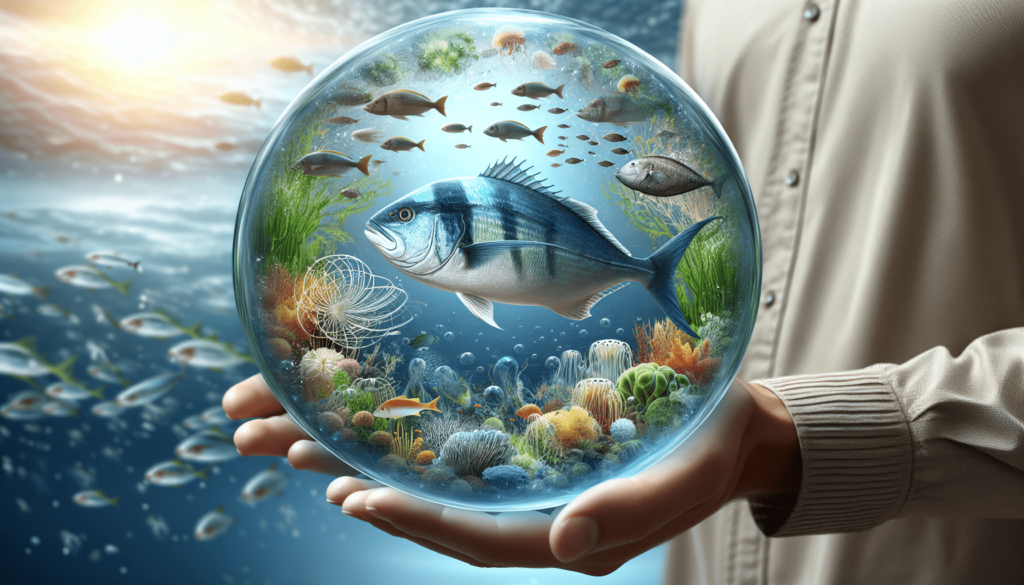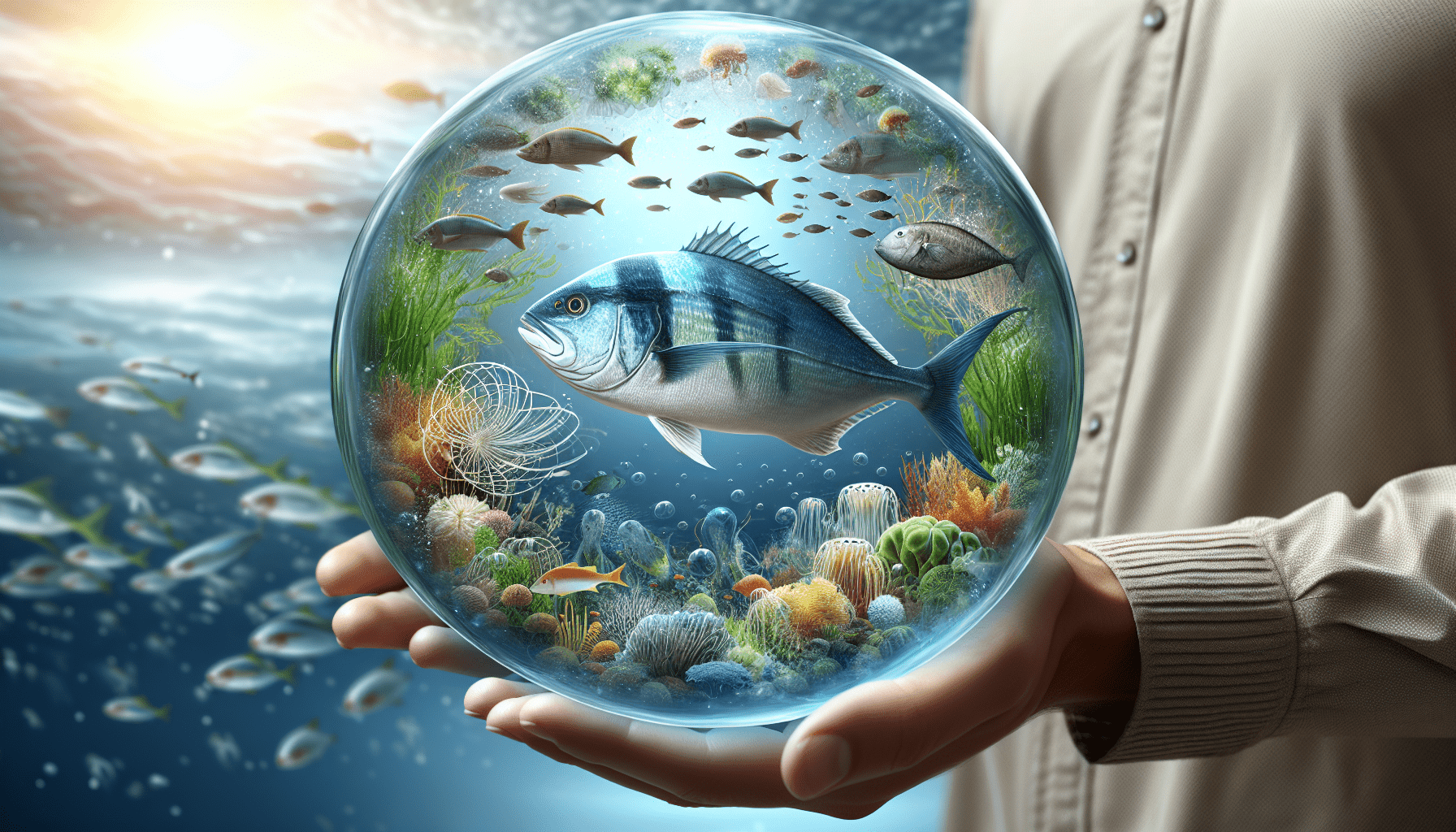Are you someone who enjoys seafood but also wants to make sure you are making environmentally-conscious choices? Look no further! This article will provide you with essential tips on how to choose sustainable seafood. By the end of this read, you’ll be equipped with the knowledge to make responsible decisions that support the health of our oceans and the long-term sustainability of seafood populations.

Learning about Sustainable Seafood
Understand the Importance of Sustainable Seafood
When it comes to seafood, choosing sustainable options is essential to protect our oceans and ensure the long-term health of marine ecosystems. Sustainable seafood refers to fish and seafood products that are caught or farmed in a manner that has minimal impact on the environment and does not jeopardize the future availability of the species. By understanding the importance of sustainable seafood, you can make informed choices that contribute to the preservation of our oceans for generations to come.
Familiarize Yourself with Different Seafood Certification Programs
To identify sustainable seafood, it’s important to familiarize yourself with different seafood certification programs. These programs assess fisheries and seafood farms to determine their environmental impact and sustainability practices. Look for certifications such as the Marine Stewardship Council (MSC), Aquaculture Stewardship Council (ASC), and Best Aquaculture Practices (BAP). These certifications indicate that the seafood has been sustainably sourced and produced.
Identifying Sustainable Seafood
Look for Third-Party Certifications or Labels
One of the easiest ways to identify sustainable seafood is by looking for third-party certifications or labels on the packaging. Third-party certifications ensure that the seafood has been responsibly harvested or farmed. These certifications provide transparency and assurance that the seafood you are purchasing has met certain sustainability criteria. Look for labels such as MSC, ASC, or BAP to confidently choose sustainable options.
Consider Locally Sourced Seafood
Another way to identify sustainable seafood is by considering locally sourced options. When seafood is sourced locally, it has a smaller carbon footprint compared to seafood that is transported over long distances. Local seafood is often caught or farmed using sustainable practices, as local fisheries tend to have a vested interest in preserving their local ecosystems. By supporting local fishermen and seafood farmers, you can contribute to sustainable fishing practices.
Check Seafood Guides or Apps
Seafood guides and apps are valuable resources that provide information on the sustainability of different seafood species. These guides classify seafood into categories such as “Best Choice,” “Good Alternative,” or “Avoid,” based on their environmental impact. By referring to these guides, you can make informed decisions when choosing seafood at restaurants or while shopping. Apps like Seafood Watch or FishVerify provide convenient access to seafood sustainability information, making it easy to make educated choices.
Avoiding Unsustainable Seafood
Avoid Species on the Seafood Watch List
When choosing sustainable seafood, it’s important to avoid species that are listed on the Seafood Watch List or similar resources. These lists are compiled by reputable organizations and highlight species that are at high risk due to overfishing or destructive fishing practices. By avoiding these species, you can help reduce the demand for unsustainable seafood and promote the conservation of vulnerable marine populations.
Say No to Illegal, Unregulated, and Unreported (IUU) Fishing
Illegal, unregulated, and unreported (IUU) fishing is a major threat to the sustainability of our oceans. IUU fishing refers to fishing activities that are conducted outside the law or without proper documentation. This type of fishing contributes to overfishing, bycatch, and habitat destruction. To avoid supporting IUU fishing, choose seafood that is traceable and has been caught or farmed in a legal and transparent manner.
Be Mindful of Overfished Species
Overfishing occurs when fish are harvested at a rate that exceeds their natural reproductive capacity. This can significantly deplete fish populations and disrupt the balance of marine ecosystems. When choosing seafood, be mindful of overfished species and opt for alternatives that are abundant and better managed. By avoiding overfished species, you can help promote the recovery and sustainability of vulnerable fish populations.
Choosing Sustainable Fishing Methods
Opt for Pole and Line, Handline, or Troll Fishing
Certain fishing methods have less impact on the environment and are more sustainable than others. Pole and line, handline, and troll fishing are examples of fishing techniques that have minimal bycatch and habitat damage. These methods involve using a single line with a hook and lure, resulting in targeted catches and reduced impact on other marine species. By choosing seafood that has been caught using these methods, you can actively support sustainable fishing practices.
Prefer Selective Fishing Techniques
Selective fishing techniques target specific species or sizes, allowing non-target species to escape and reproduce. By using selective fishing gear such as nets with larger mesh sizes or escape panels, fishermen can minimize bycatch and reduce the unintentional capture of juvenile or non-targeted fish. Choosing seafood that has been caught using selective fishing techniques helps protect the biodiversity and overall health of marine ecosystems.
Support Fishery Improvement Projects (FIPs)
Fishery Improvement Projects (FIPs) are initiatives aimed at improving the sustainability of fisheries. FIPs work towards implementing sustainable fishing practices, reducing bycatch, and promoting the recovery of fish populations. By supporting seafood products that are sourced from fisheries involved in FIPs, you are contributing to the conservation of marine ecosystems and encouraging positive change within the fishing industry.

Understanding Farming Practices
Consider Responsibly Farmed Seafood
Aquaculture, or fish farming, is an important component of sustainable seafood production. When done responsibly, aquaculture can reduce pressure on wild fish stocks and provide a reliable source of seafood. Look for responsibly farmed seafood options that adhere to environmental standards, such as the ASC certification mentioned earlier. These certifications ensure that seafood has been farmed using practices that minimize environmental impacts and prioritize the health and welfare of the fish.
Avoid Seafood with High Environmental Impacts
Certain farming practices can have significant environmental impacts, such as the use of antibiotics, pollution from excessive waste, and destruction of sensitive coastal habitats. To choose sustainable seafood, avoid products from farming operations that have a high environmental impact. Instead, opt for seafood that has been produced using methods that prioritize the sustainable use of resources and minimize negative ecological consequences.
Support Organic and Closed-Loop Aquaculture
Organic aquaculture and closed-loop systems are innovative approaches to sustainable seafood production. Organic aquaculture prohibits the use of synthetic chemicals and antibiotics, ensuring environmentally friendly and socially responsible farming practices. Closed-loop systems minimize waste and pollution by recycling water and nutrients within the farm. By supporting organic and closed-loop aquaculture, you are promoting sustainable farming methods that prioritize the health of our oceans.
Evaluating Seafood Sources
Research the Reputation of Seafood Suppliers and Retailers
To ensure that you are purchasing sustainable seafood, take the time to research the reputation of seafood suppliers and retailers. Look for companies that prioritize sustainability, transparency, and responsible sourcing practices. Reputable suppliers and retailers often have partnerships with certified fisheries or farms and provide detailed information about the origins of their seafood. By choosing trusted sources, you can have confidence in the sustainability of the seafood you purchase.
Consider Fishing Location and Methods
The fishing location and methods used can significantly impact the sustainability of seafood. Some regions have stricter regulations and better management practices, helping to maintain healthy fish populations and protect marine environments. Additionally, certain fishing methods, as discussed earlier, have less impact on the environment than others. When evaluating seafood sources, consider both the location and fishing methods to make sustainable choices.
Support Small-Scale and Community-Based Fisheries
Small-scale and community-based fisheries often employ sustainable fishing practices and have a deep connection to their local ecosystems. By supporting these fisheries, you contribute to the livelihoods of local communities and help preserve traditional fishing methods that prioritize sustainability. Look for seafood products sourced from small-scale or community-based fisheries to support these important contributors to sustainable seafood production.
Seasonality of Seafood
Explore Seafood Availability by Season
Just like fruits and vegetables, seafood has seasons when it is most abundant and readily available. By exploring the seasonality of seafood, you can choose options that are in peak season, ensuring freshness and optimal flavor. Additionally, choosing seasonal seafood helps maintain balance in marine ecosystems by allowing species to reproduce and replenish their populations. Look for guides or resources that provide information on the best seafood choices for each season.
Be Flexible with Your Seafood Choices
Being flexible with your seafood choices is key to promoting sustainability. If a particular species is not in season or is not available sustainably, consider alternative options. Embrace the diversity of seafood and explore different flavors and textures. By being open to trying new species, you can support sustainable fishing practices and reduce the pressure on overexploited species.
Reading Labels and Menus
Look for Detailed Information on Labels
When purchasing seafood from a store or supermarket, look for labels that provide detailed information about the product. Sustainable seafood labels should include the species name, fishing or farming method, and the origin of the product. This information allows you to make informed decisions based on the sustainability attributes of the seafood. Choose products with transparent labeling to ensure you are selecting sustainable options.
Ask Questions at Restaurants
At restaurants, don’t hesitate to ask questions about the seafood on the menu. Inquire about the origin of the seafood, how it was caught or farmed, and whether it meets any sustainability certifications. Responsible restaurants will gladly provide information and demonstrate their commitment to sustainable seafood. By engaging in conversations about sustainability, you can encourage restaurants to prioritize sustainable sourcing and promote positive change in the industry.
Support Restaurants with Sustainable Seafood Policies
Supporting restaurants with sustainable seafood policies is a significant way to contribute to the demand for sustainable seafood. Restaurants that prioritize sustainability often have clear policies and commitments to sourcing seafood responsibly. Look for restaurants that support local fisheries, offer sustainable seafood options, and provide transparency about their sourcing practices. By dining at these establishments, you are directly supporting sustainable fishing practices and encouraging others to follow suit.
Educate and Spread Awareness
Talk to Friends and Family about Sustainable Seafood
Educating your friends and family about sustainable seafood is a powerful way to create positive change. Start conversations about the importance of sustainable fishing practices, share your knowledge about certification programs, and discuss the impact of individual choices on the health of our oceans. By sharing your passion and insights, you can inspire others to make more sustainable choices when it comes to seafood.
Share Resources and Information Online or via Social Media
In today’s digital age, sharing resources and information online or via social media platforms is an effective way to spread awareness about sustainable seafood. Share articles, guides, and educational materials that highlight the need for sustainable fishing practices and provide tips for making conscious seafood choices. By harnessing the power of social media, you can reach a wider audience and serve as a catalyst for change.
Support and Advocate for Improved Seafood Policies
Advocacy is a crucial component of creating a more sustainable seafood industry. Support organizations and campaigns that work towards stronger regulations and policies for sustainable fishing practices. Sign petitions, participate in public consultations, and engage with policymakers to make your voice heard. By advocating for improved seafood policies, you can contribute to the conservation of our oceans and promote a more sustainable future.
Making Sustainable Choices a Habit
Stay Informed and Continuously Educate Yourself
Sustainable seafood practices are continually evolving, and it’s important to stay informed about the latest developments. Continuously educate yourself about new certifications, seafood guides, and sustainable fishing techniques. Stay updated on current issues and challenges facing the seafood industry. By staying informed, you can make well-informed choices and actively participate in the ongoing efforts towards greater sustainability.
Set Personal Goals for Sustainable Seafood Consumption
Setting personal goals for sustainable seafood consumption can help ensure that you make conscious choices on a regular basis. For example, you may decide to only purchase seafood with certain certifications, or commit to cooking at home using sustainable seafood. By setting goals, you create a framework for making sustainable seafood a priority in your everyday life.
Inspire Others to Make Conscious Seafood Choices
Leading by example and inspiring others to make conscious seafood choices is a powerful way to create a positive ripple effect. Share your sustainable seafood experiences, recipes, and tips with your friends, family, and community. Organize seafood-focused events or cooking demonstrations to showcase delicious and sustainable options. By inspiring others, you multiply the impact of your own sustainable choices and contribute to a more sustainable seafood future.
In conclusion, learning about sustainable seafood is crucial in protecting our oceans and ensuring the long-term health of marine ecosystems. By understanding the importance of sustainable seafood and familiarizing yourself with different certification programs, you can make informed choices when selecting seafood. Identifying sustainable seafood involves looking for third-party certifications, considering locally sourced options, and checking seafood guides or apps. It’s important to avoid unsustainable seafood by staying away from species on the Seafood Watch List, saying no to illegal fishing practices, and being mindful of overfished species. Choosing sustainable fishing methods, understanding responsible farming practices, and evaluating seafood sources play a significant role in promoting sustainability. Additionally, considering the seasonality of seafood, reading labels and menus, and educating others about sustainable seafood are vital steps towards making sustainable choices a lifelong habit. By taking these actions, you can contribute to the conservation of our oceans and inspire positive change in the seafood industry.

